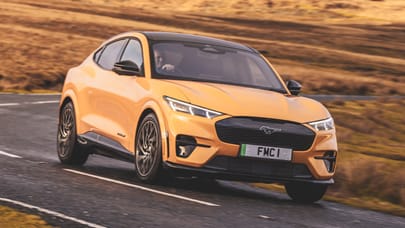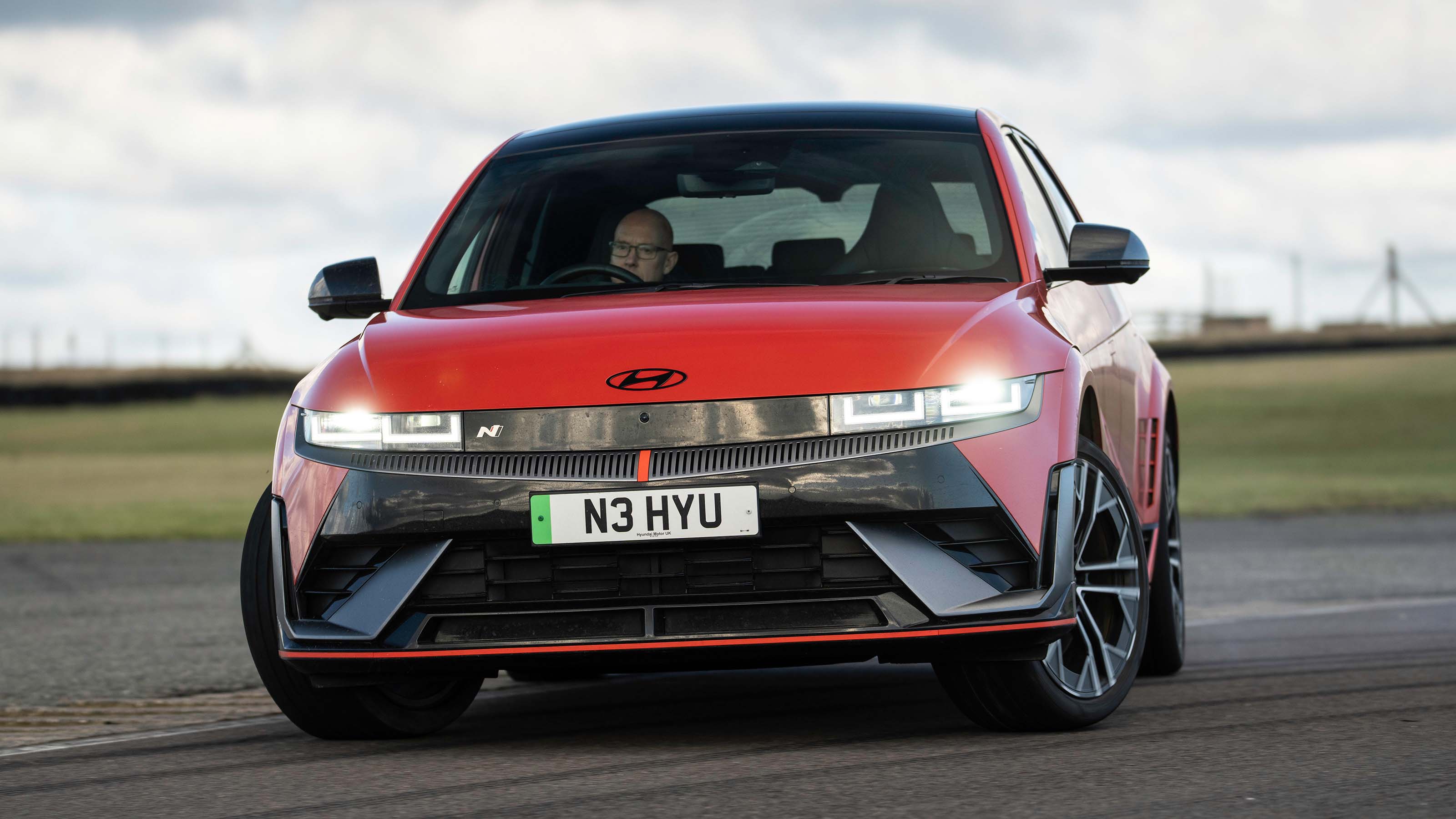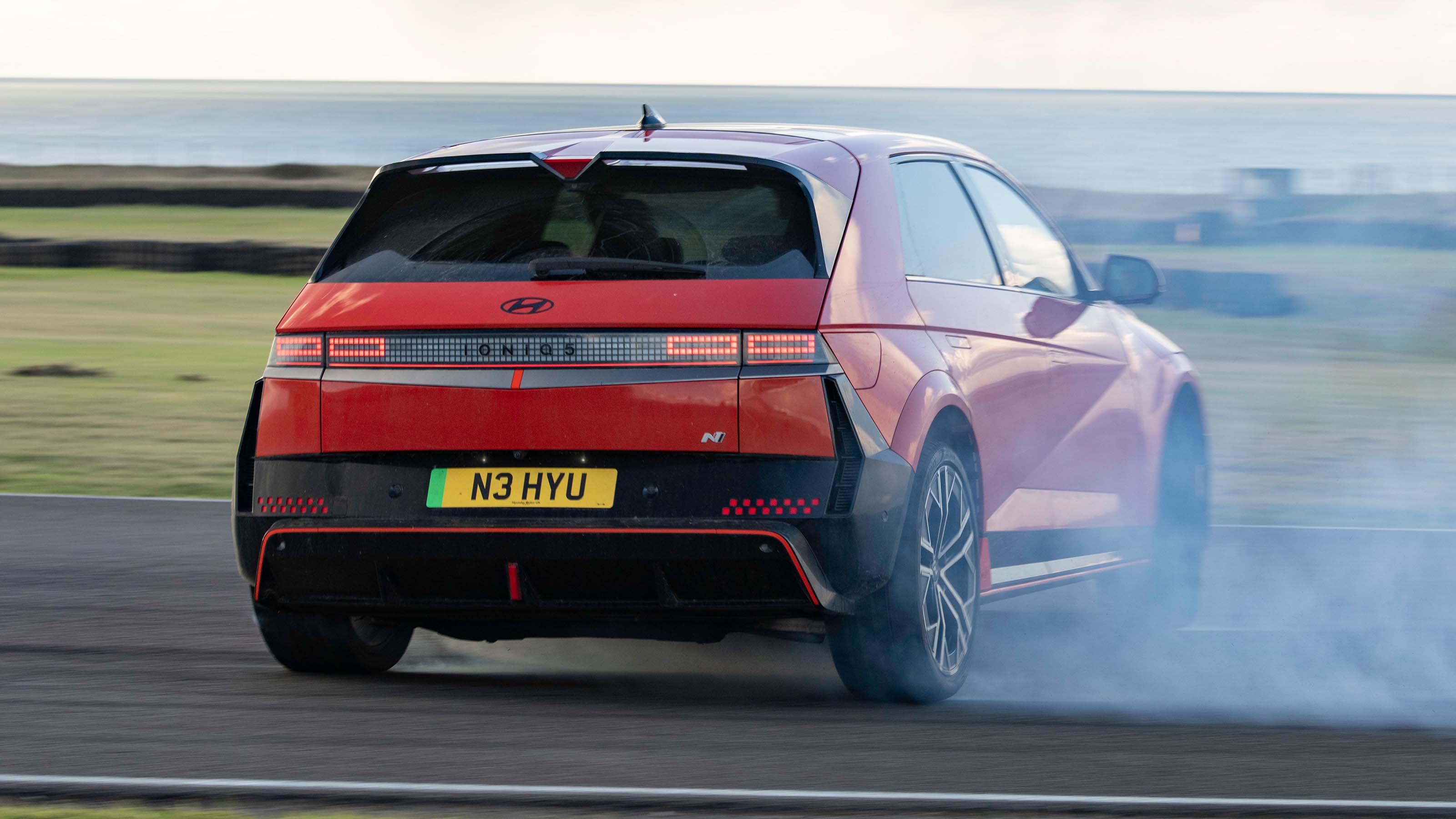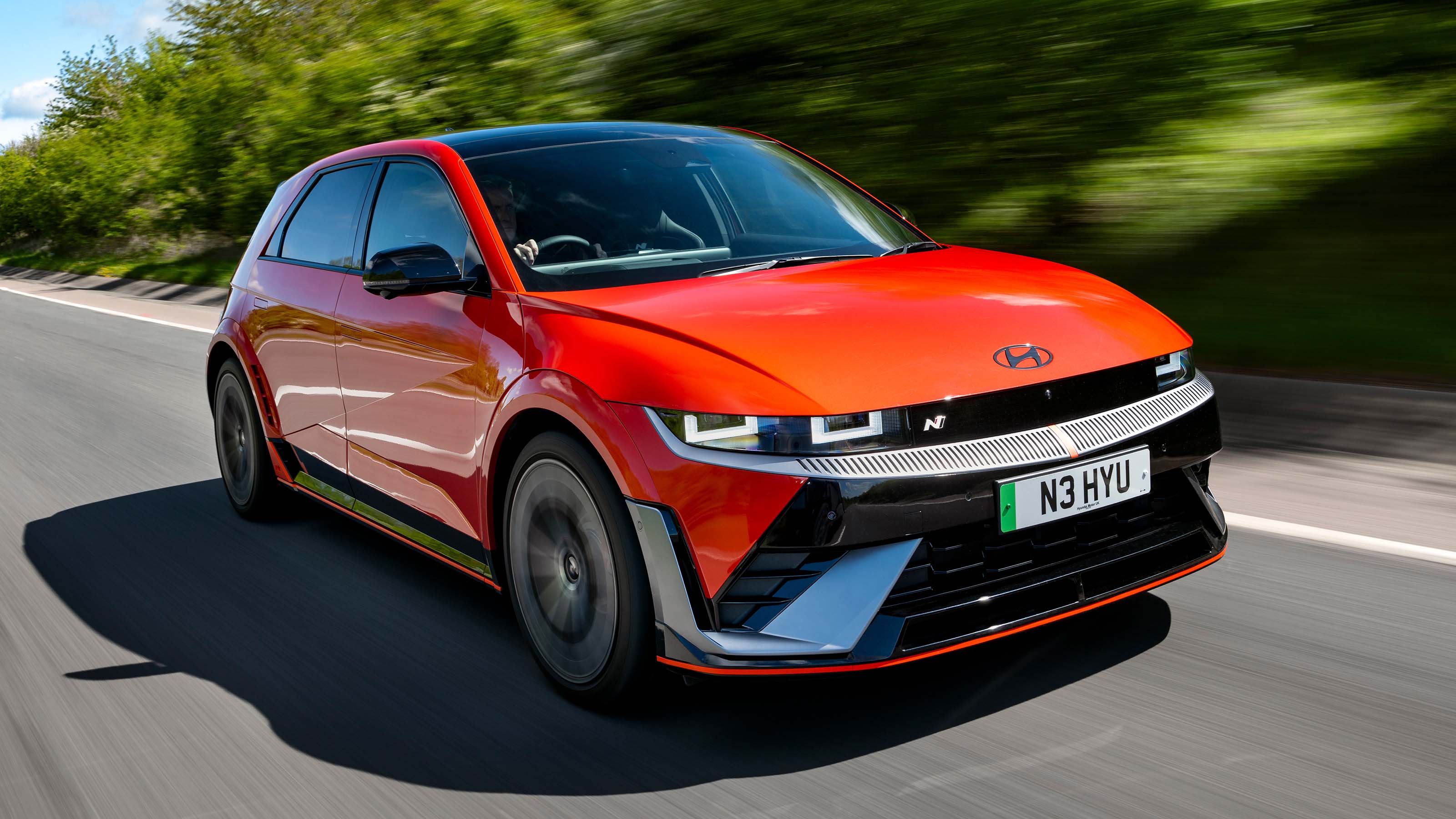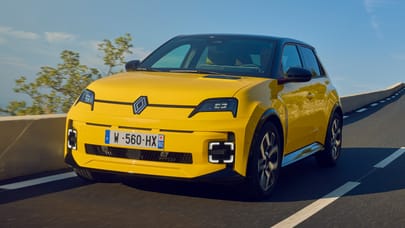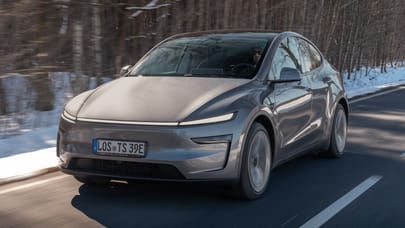
Good stuff
Remarkable driving engagement, real software innovation, practical
Bad stuff
Not super-efficient (but nor are petrol supersaloons)
Overview
What is it?
Easy question to ask, hard to answer. This isn't exactly an electric hot hatch. It's too big and expensive to fit that template. An electric sports crossover? Strictly speaking yes, but that sounds too serious-minded.
It's a riot, is what it is.
Which is just what you'd expect from Hyundai's N division. Fun cars aren't about logic. So, apparently, logic has been cast to the four winds here. It's got a fake engine sound. It's even got fake gears. It's got torque vectoring that's calibrated not to be fast but to be joyful. All of which sound like silly gimmicks. Or might they actually provide a newfound depth of engagement for an EV?
Rivals among EVs include the Tesla Model Y and Ford Mustang Mach-E GT, both of them fast but one-dimensional to drive. Or the latest Porsche Macan Turbo, which is also electric and also violently fast.
Why, what are the numbers?
The twin motors kick out 650bhp between them, for a 0-62mph time of 3.4 seconds.
It runs Hyundai's 800V platform, which, say the engineers, is vital to give it track-day capability. This they define as running a circuit pace for 20 minutes, then getting enough charge in 20 minutes to do another 20 minute session. In turn to make that possible, N is installing ultra-rapid chargers in circuit pits worldwide.
It'll do a Nurburgring lap in about 7m 50s in its most full-on mode, but you can also select an endurance mode that slightly shaves off the motor peaks, to give two of those laps – 25.9 track miles – at under eight minutes a lap without de-rating.
The battery capacity is 84kWh, for 280 miles WLTP full-to-flat. That's pretty ropey compared with the standard Ioniq 5, but then look at the size of the tyres and the downforce measures and you see why efficiency has taken a hit. Cake, eat, prohibition.
How did they do that?
This starts life as an Ioniq 5, a soft, roomy and soothing five-seater. The N model gets a painstaking go-over in all directions: mechanically, aerodynamically, cosmetically, electrically and in the software.
The bodyshell is welded and glued to be stronger, its suspension subframes reinforced, the whole wider-track suspension given new arms as well as springs, adaptive dampers, bushes and so on. The steering column mounts are stronger and the rack faster, with remapped assistance. The rear motor is attached to an electronically controlled limited-slip diff. The tyres are 275/35 21. Brakes are bigger. That's the mechanical base.
Aero next: it's lowered, and has new bumpers and a rear spoiler to cut lift, plus air control around the wheels for brake cooling. Battery and electronic cooling is better too, of course. The Cd has risen to 0.313 and frontal area is up too.
Now the electrical parts. The motors are stronger than standard, duh, but so are the power electronics, including an extra inverter so that it can harvest an astonishing 435bhp regeneration, for 0.6g of braking force.
Then the software. We'll talk about this more in the Driving tab. But in short, you can select a thoroughly plausible engine-like sound generator (or an implausible sci-fi one), and equally plausible 'gearbox' simulation, so you can estimate your speed into corners and modulate wheel torque out of them. You can vary front-rear torque bias. Vary the way it brakes to turn into corners. Drag strip fans can select from three levels of launch control according to the available grip. Drifters have a special – and frankly tricky – skid assist mode.
OK, OK. Enough hardware and software. What does it do for the meatware behind the wheel?
It's huge fun, and can be set to match your mood. On great roads you can set it up to feel like a good petrol hatch. Maybe closest to a Mercedes-AMG A45. It sheds weight and the engine sound and 'paddleshift' involve you deeply in the sense of speed. The torque vectoring and brake regen give it an agility that belies the two-and-a-quarter tonnes of mass.
Honestly it lightens up miraculously. But most of all the joy lies in the feel and interaction coming through the steering and chassis: you meld with it, feel its efforts, adjust and trim its moves.
On a track you can fiddle with the modes to sweep tidily through the apex kerbs, or play with oversteer. Click over to the Driving tab of this review for much more.
And how is it as a car for the rest of the time?
It's in no way insufferable for urban or motorway running, slotting happily into the traffic and demanding little of you. Turn off the noises and it's smooth as the basic Ioniq 5, and even the ride's acceptable.
As with the standard Ioniq 5, there's remarkable space in the cabin, especially out back. The front is re-trimmed to be sportier, and has touches like knee bolsters to help keep you in your seat in hard cornering. The front seats are special buckets too.
But it doesn't neglect storage space and comfort, and none of the assistance or connectivity features have been chucked overboard in the transition to N.
What's the verdict?
Yes, it's heavy. But mostly it doesn't feel it. Hyundai engineers say they needed the company's big EV platform because the 800-volt rapid charging is vital for its ability to do track laps in quick succession. We do wonder what would have happened if they'd allowed themselves to abandon that article of faith and make a smaller, lighter, cheaper EV. It might have been just as much fun if slower to recharge. But that's a possibility for another day.
Right now, the Ioniq 5 N is an electric car that's as involving as a really good petrol car. In some ways it does that by brazenly impersonating a petrol drivetrain. The surprising thing is that's absolutely not just a gimmick.
Then in corners it has some original tricks of its own. It's not just fast, it's confident and playful – so it's fun even when it's not going fast. It's useful and versatile too.
So it has many of the talents you expect from an electric car, and many more that so far are unique in EVs. Which makes us call it a new and brilliant chapter.
The Rivals

£44,925 - £51,925
